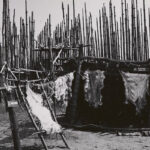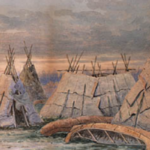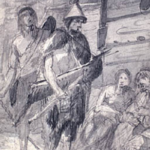The Nunatsiavut Government, representing the Labrador Inuit, encapsulates a remarkable narrative of resilience, adaptation, and self-determination. Rooted in the remote and rugged landscapes of Labrador, the Inuit of this region have a history that predates European arrival by millennia. This essay explores the prehistory of the Labrador Inuit, their initial contacts with European explorers, the evolving dynamics of their relationships with colonial powers, and the development of Nunatsiavut to its modern-day governance.
Prehistory and Arrival in Labrador
The Inuit presence in Labrador dates back over 4,000 years, originating from the Paleo-Eskimo tradition that spread across the Arctic from Siberia. The Thule Inuit, ancestors of today’s Labrador Inuit, arrived around 1,000 years ago, replacing the earlier Dorset culture. The Thule adapted exceptionally well to the harsh Arctic environment, relying on advanced hunting techniques, particularly for seals, whales, and caribou (Felt et al., 2012). Their mobility, facilitated by the use of umiaks and kayaks, and their development of semi-subterranean sod houses, underscored their ingenuity in surviving in a challenging environment.
Labrador’s strategic location provided the Inuit with rich marine resources and a pivotal position for trade and cultural exchange with other Indigenous groups. These interactions are evident in shared artifacts and technologies found across archaeological sites, which highlight the interconnectedness of Arctic cultures.
First Contact with Europeans
European contact with the Labrador Inuit began in the early 16th century, primarily with Basque whalers and later with French and English fishermen and traders. Initially, these interactions were limited to coastal areas and revolved around the exchange of goods. Inuit traded seal skins, whale oil, and ivory for European iron tools, cloth, and firearms. However, these early exchanges introduced disruptions, including new diseases such as smallpox, which decimated Indigenous populations (Rankin, 2012).
By the 18th century, Moravian missionaries from Germany established missions in Labrador, seeking to convert the Inuit to Christianity. Their arrival marked a profound cultural shift. Mission settlements such as Nain, Hopedale, and Okak became centres of interaction, offering education and health services while encouraging the Inuit to adopt European lifestyles. Despite these efforts, the Inuit maintained many traditional practices and resisted complete assimilation (Arendt, 2010).
Relationships with European Settlers
The relationship between the Inuit and Europeans was complex and evolved over centuries. While trade fostered economic interdependence, European settlement brought new challenges, including competition for resources and land displacement. The Moravian missions provided some stability but also curtailed Inuit mobility, which was central to their traditional lifestyle.
During the 19th and early 20th centuries, the Hudson’s Bay Company established trading posts throughout Labrador, further integrating the Inuit into a global fur trade economy. This economic system reshaped Inuit hunting practices, often intensifying their reliance on furbearing animals like foxes. While this trade brought material benefits, it also created dependencies and exposed the Inuit to volatile market forces (Procter et al., 2012).
Transition to Modern Governance
The 20th century ushered in profound changes for the Labrador Inuit. Government policies aimed at assimilation, including residential schools, disrupted Inuit families and suppressed their language and culture. The establishment of Newfoundland as a Canadian province in 1949 further complicated Inuit relations with colonial authorities, as the new government exerted greater control over Labrador’s resources and governance.
Amid these pressures, the Inuit began advocating for their rights and cultural preservation. The Labrador Inuit Association (LIA), founded in 1973, spearheaded efforts to negotiate land claims and self-governance. After decades of negotiations, the Labrador Inuit Land Claims Agreement was signed in 2005, leading to the creation of the Nunatsiavut Government—the first Inuit regional government in Canada.
Nunatsiavut, meaning “our beautiful land” in Inuktitut, governs approximately 72,000 square kilometers in northern Labrador. It grants the Inuit control over resource management, health, education, and cultural preservation. This governance model exemplifies Indigenous self-determination within the Canadian constitutional framework.
Contemporary Nunatsiavut
Today, the Nunatsiavut Government prioritizes the preservation of Inuit culture and the sustainable development of Labrador’s resources. Programs to revitalize the Inuktitut language, protect wildlife, and address the impacts of climate change are central to its mandate. Climate change poses significant challenges, including coastal erosion, melting sea ice, and threats to traditional hunting practices (Woollett, 2007).
Economic development remains a contentious issue. Labrador’s rich mineral resources, including nickel and iron ore, offer potential revenue but also raise environmental concerns. The Voisey’s Bay mine, for instance, has been a focal point for debates about economic benefits versus ecological risks (Procter et al., 2012).
Social issues, including housing shortages, food insecurity, and health disparities, continue to affect Inuit communities. However, the Nunatsiavut Government has made strides in addressing these challenges, emphasizing community-driven solutions and collaboration with provincial and federal governments.
Conclusion
The history of the Labrador Inuit, culminating in the establishment of the Nunatsiavut Government, reflects a journey of resilience, adaptation, and empowerment. From their deep-rooted prehistory to their navigation of colonial disruptions and modern governance challenges, the Inuit of Nunatsiavut have demonstrated a remarkable ability to sustain their cultural identity while engaging with a rapidly changing world. Their story serves as a testament to the strength of Indigenous communities and their vital role in shaping Canada’s cultural and political landscape.
References
- Felt, L., Procter, A. H., & Natcher, D. C. (2012). Settlement, Subsistence, and Change among the Labrador Inuit: The Nunatsiavummiut Experience. ISER Books.
- Rankin, L. (2012). “An Archaeological View of the Thule/Inuit Occupation of Labrador.” Epub.Sub.Uni-Hamburg.de.
- Arendt, B. (2010). “Caribou to Cod: Moravian Missionary Influence on Inuit Subsistence Strategies.” Historical Archaeology.
- Woollett, J. (2007). “Labrador Inuit Subsistence in the Context of Environmental Change: An Initial Landscape History Perspective.” American Anthropologist.
- Procter, A. H., & Felt, L. (2005). The Struggle for Survival in Labrador: The Inuit Experience. Memorial University of Newfoundland.



